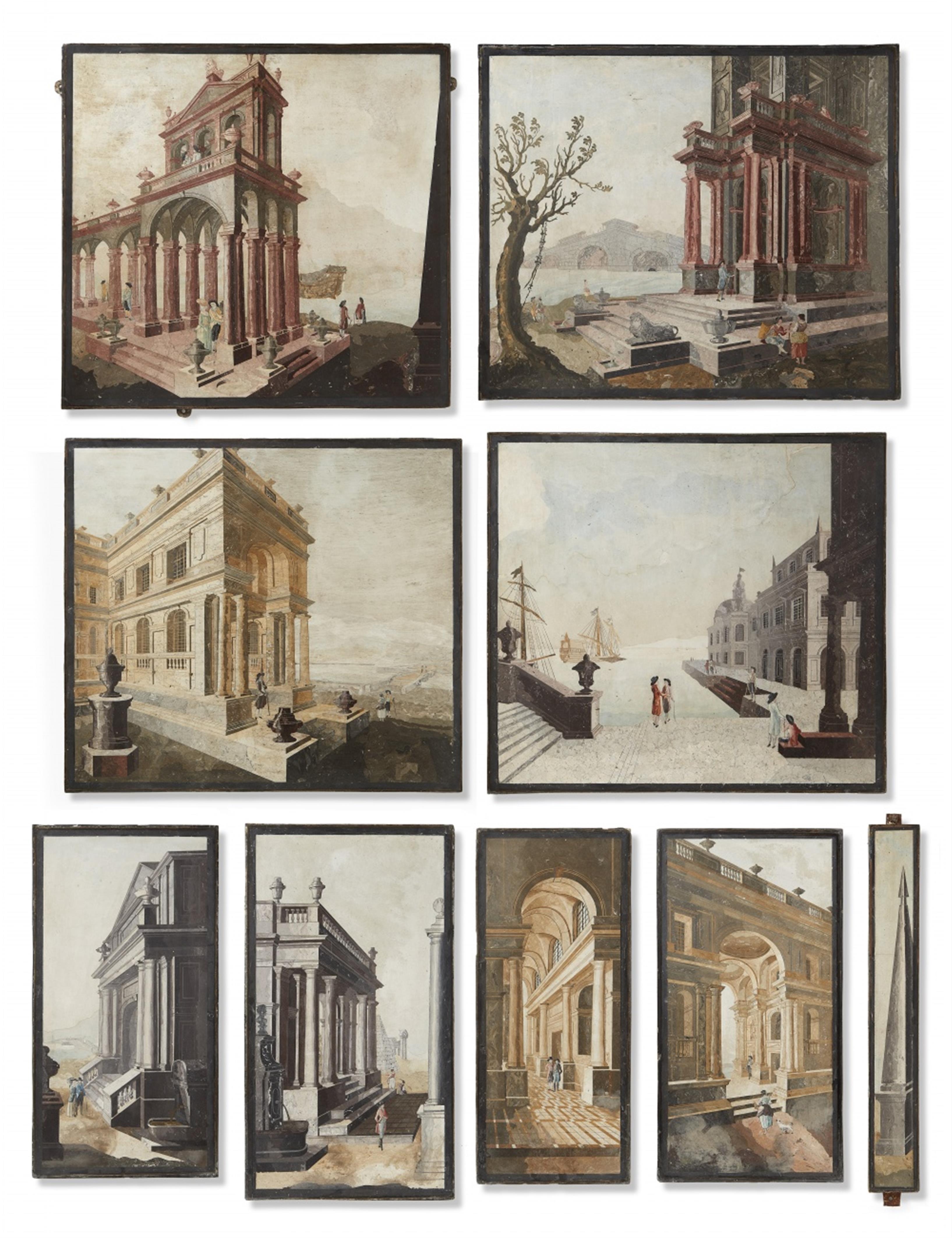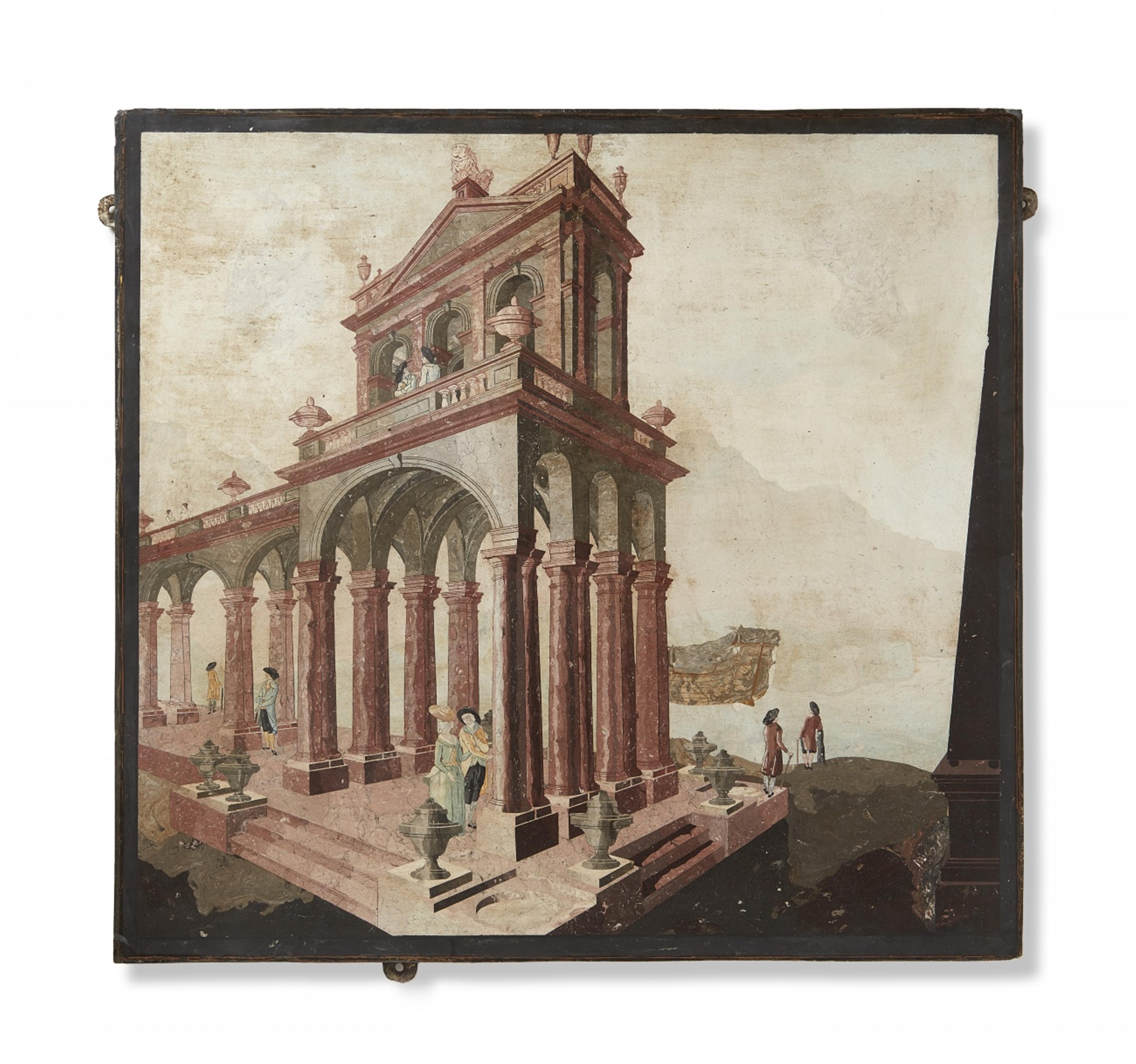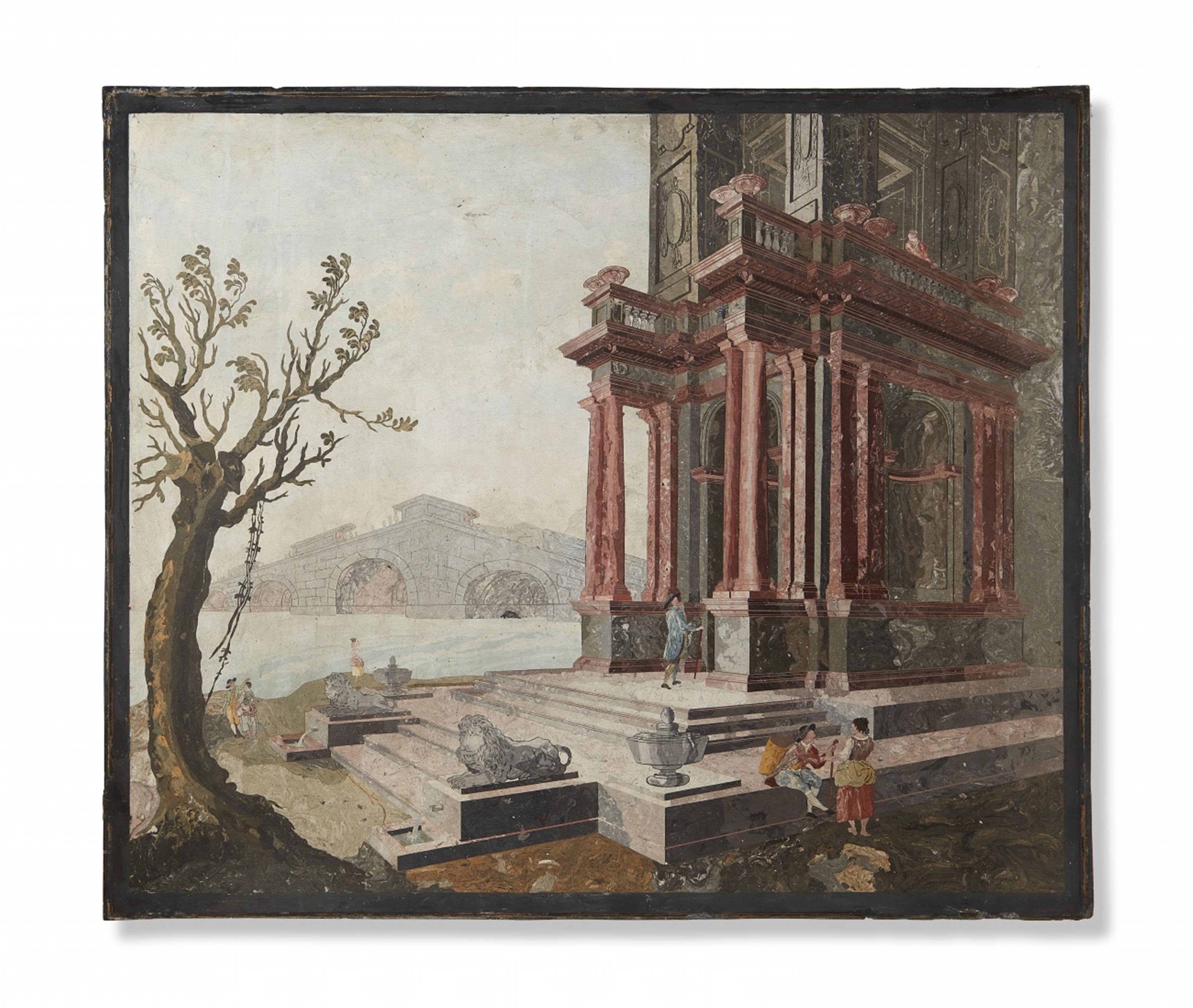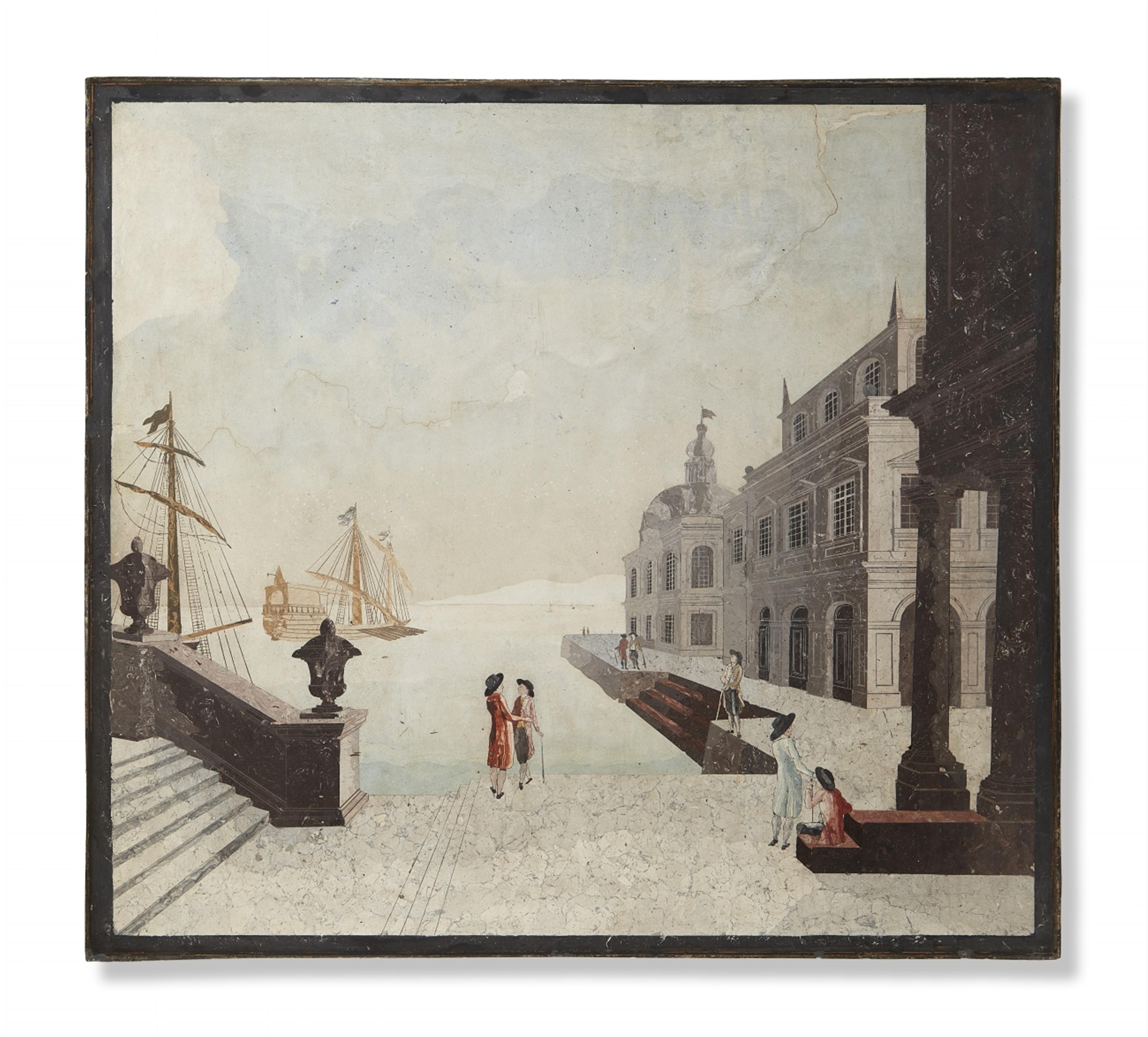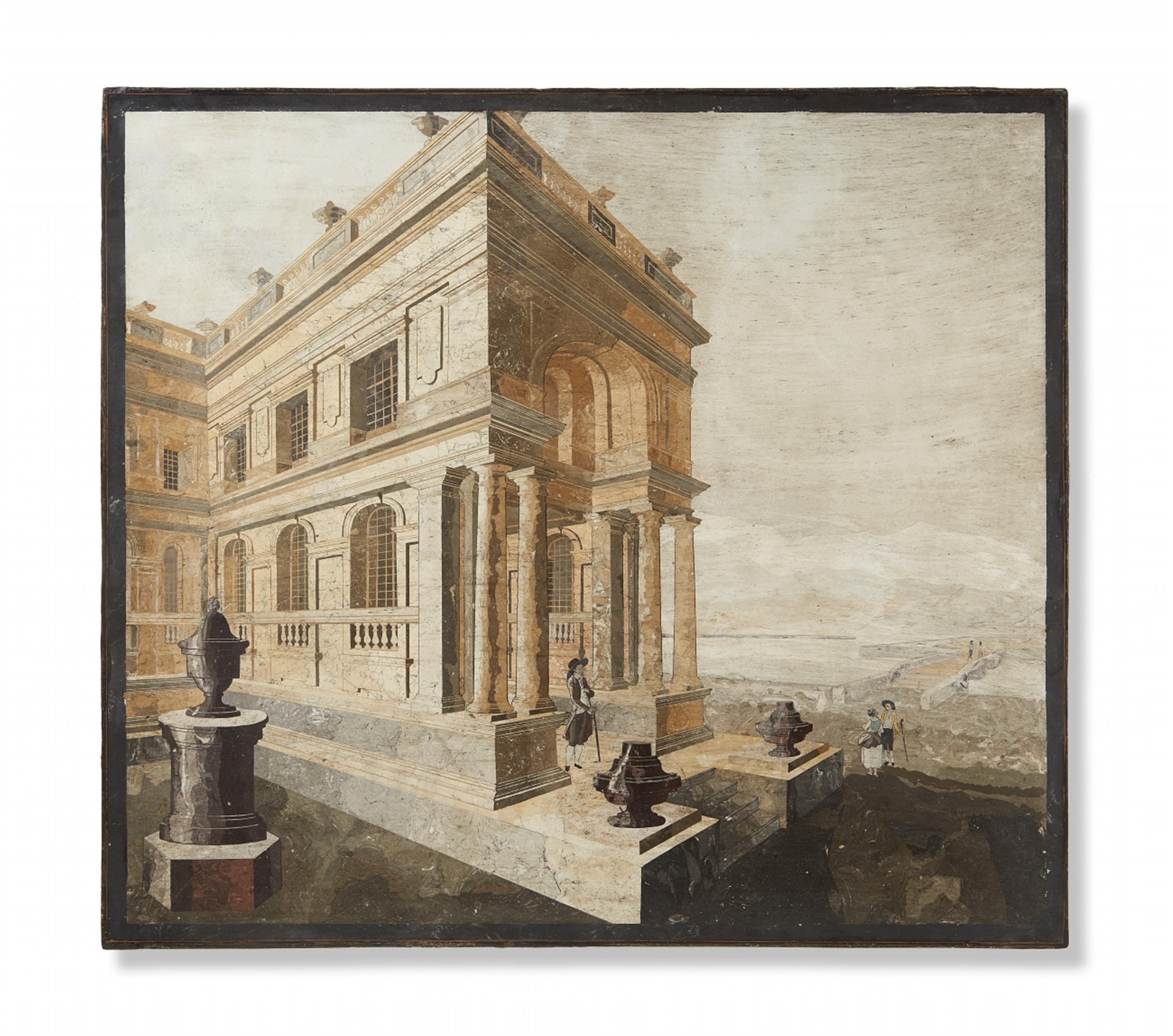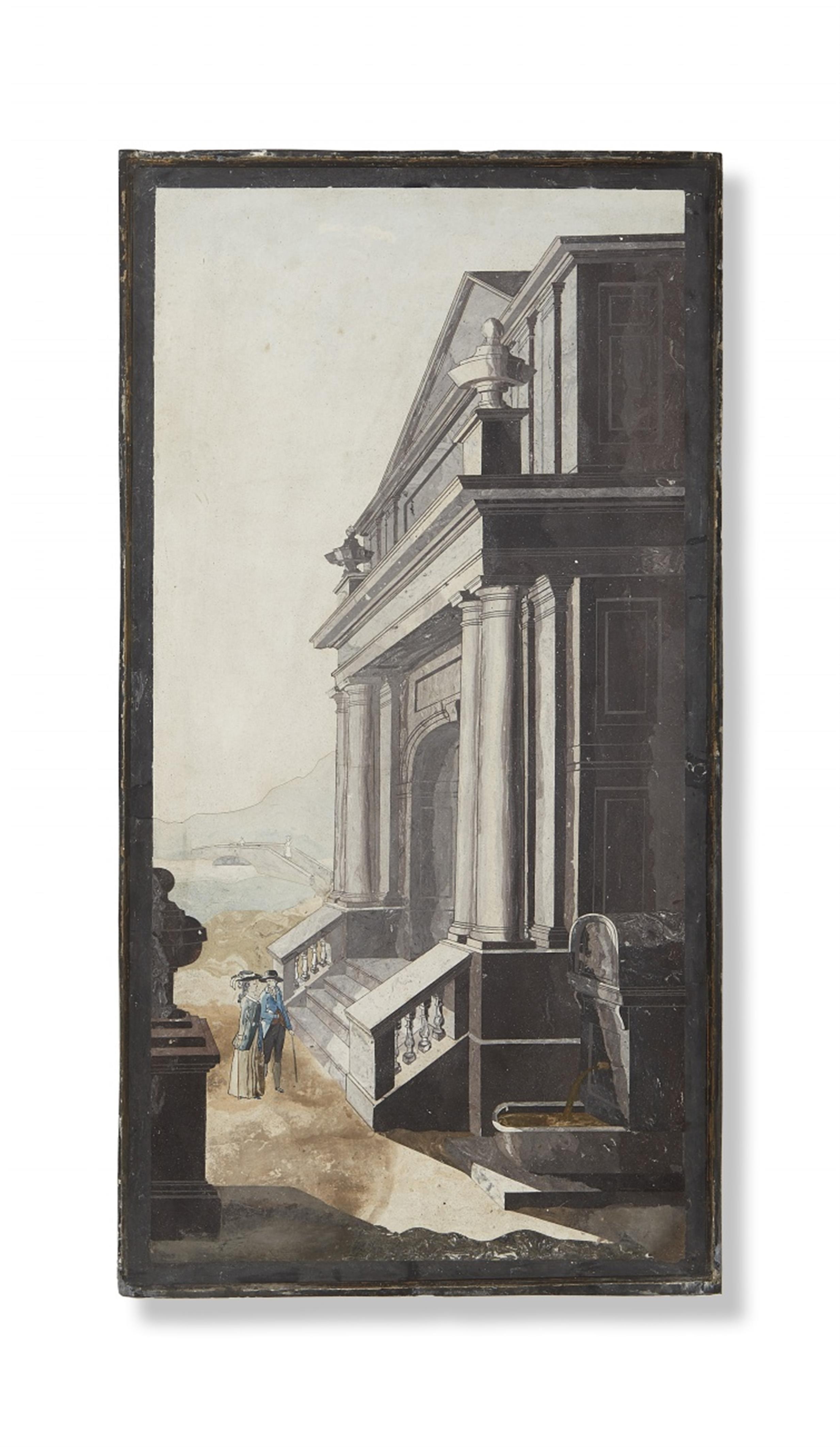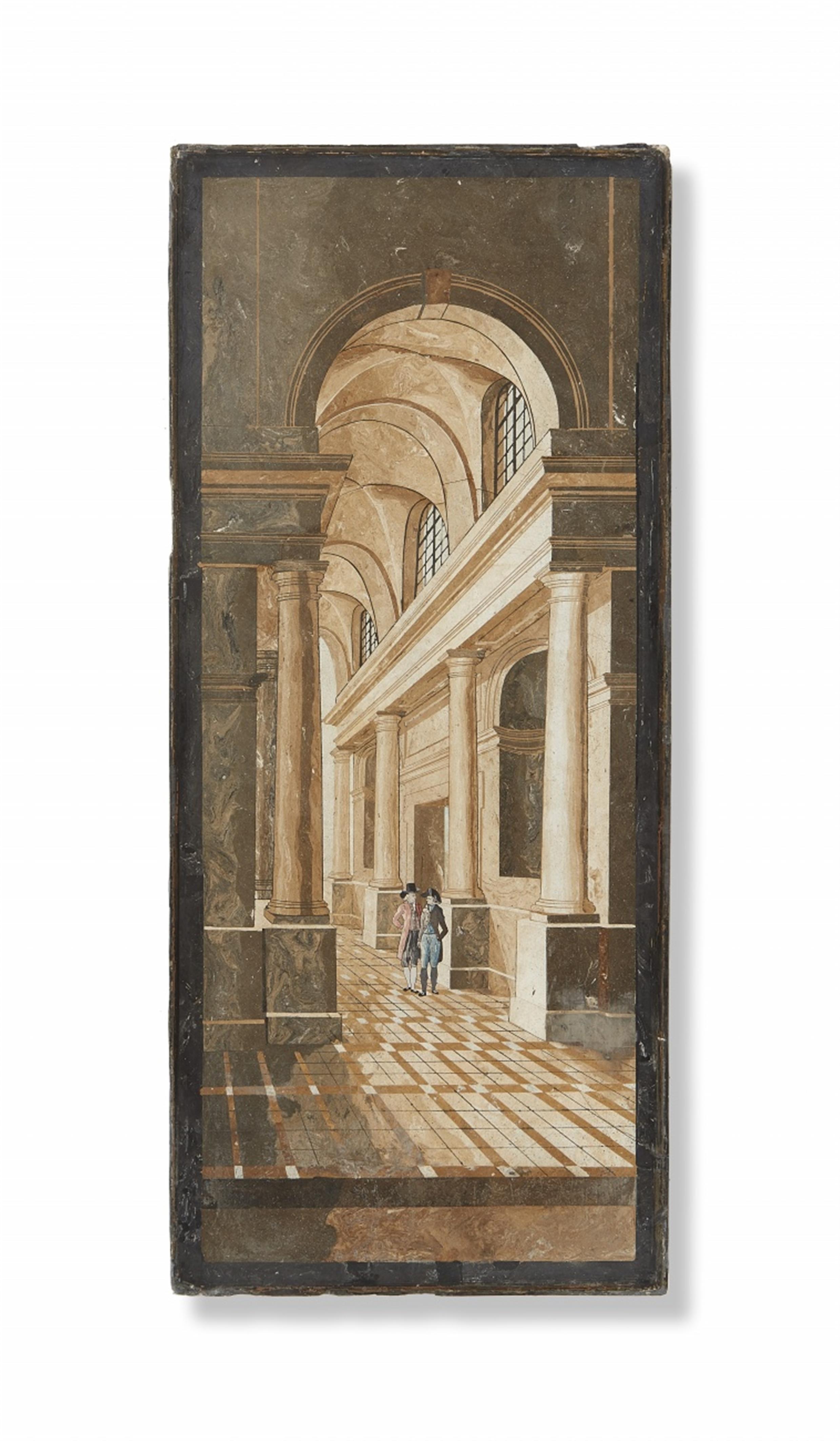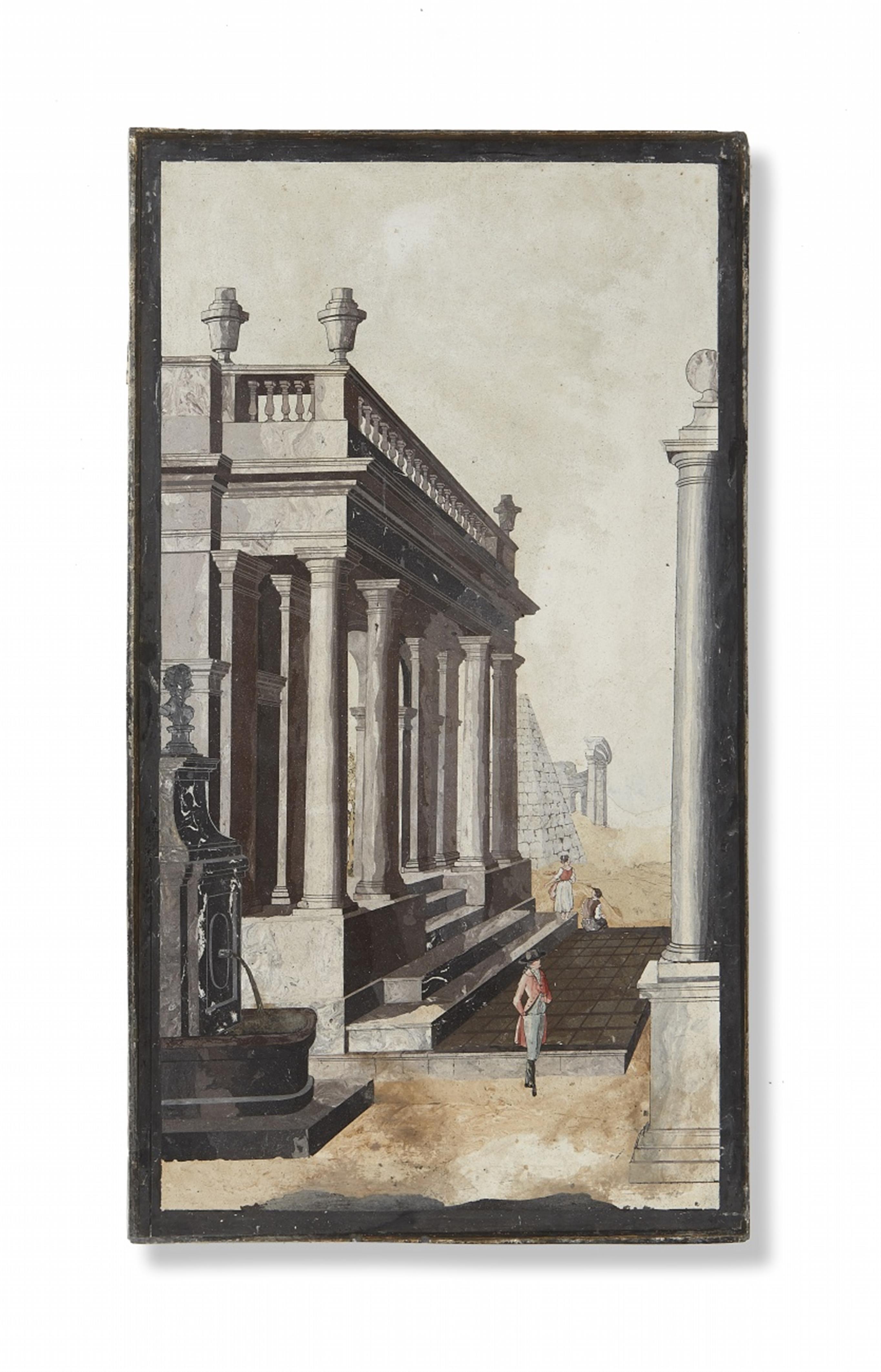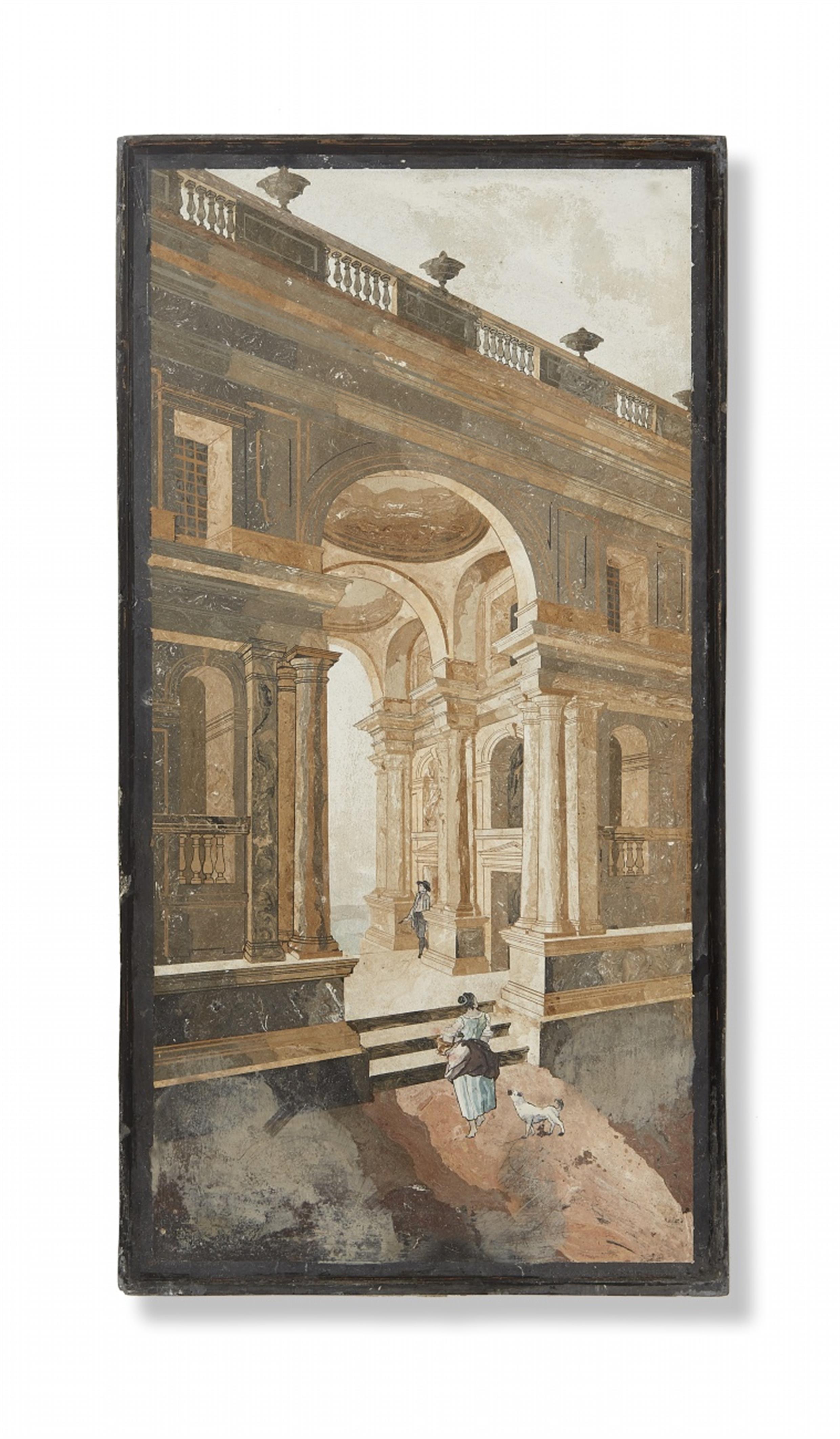An important and unique set of nine Scagliola panels
Coloured alabaster plaster mix, coloured marble on substrate (possibly plaster). 1. A harbour scene with two ships on the left and representative architecture on a quay on the right, H 87 cm (34¼ in.), W 97 cm (28¼ in.)
2. A palace architecture with a large loggia on the left and a view of a bridge on the right, H 86 cm (33 in.), W 101.5 cm (40 in.)
3. A tree on the left, the loggia of a palace on the right, in between a two-arched bridge, H 85.5 cm (33¾ in.) W 96 cm (37¾ in.)
4. Two-storey colonnade architecture on the left and an obelisk on the right, with a view over water in between, H 88 cm (34 ), W 93.5 cm (36¾ in.)
5. On the left a well architecture, a loggia, in the background a pyramid and ruins, H 83.5 cm (32 in.), W 51 cm (20 in.)
6. Large archway, woman with dog in the foreground, H 85.5 cm (33¾ in.), W 45.5 cm (18 in.)
7. View into a gallery, H 87 cm (34¼ in.), W 38 cm (15 in.)
8. A fountain and a Portico architecture to the right, H 84.5 cm (33¼ in.), W 45 cm (17¾ in.)
9. An obelisk, H 87 cm (34¼ in.), W 12.5 cm (5 in.) Unframed. Restored.
Tuscany, Vallombrosa abbey, Don Enrico Hugford and studio, 1785 - 90.
Don Enrico Hugford (Livorno 1695 - 1771 Florence) was born in Italy as the son of a Catholic English watchmaker. In 1711 he entered the Benedictine section of Vallombrosa, and became abbot in 1743. There, about 30 km southeast of Florence, surrounded by knowledgeable workshops that had been practising the scagliola technique since the 16th century, he devoted himself to his own specialisation and perfection. He found an individual, unmistakable style that was specially tailored to the architecturally interested English buying public who visited Florence and Vallombrosa during the Grand Tour.
The abbey was founded in 1038 but modernised in the mid-15th century. Galileo Galilei is thought to have lived there as a novice until around 1578, and he is known to have conducted observations of the weather there for the Medici family in 1654 - 67, making it probably the first weather station in Europe. Virgilio Falugi (1626 - 1707) and Bruno Tozzi (1656 - 1743) both studied and published articles on the flora of the region. The abbey was a centre of scientific research in Tuscany for several centuries.
Provenance
Formerly Elbers House in Monschau.
Sold Lempertz Cologne auction 827 on 15 November 2002, lot 695 - 703.
Literature
For the attribution see Massinelli, Scagliola l'arte della pietra di luna, Rome 1997, pp. 24-34 and pp. 56-59.
A detailed text by Prof. Dr. Hans Ottomeyer is available.

